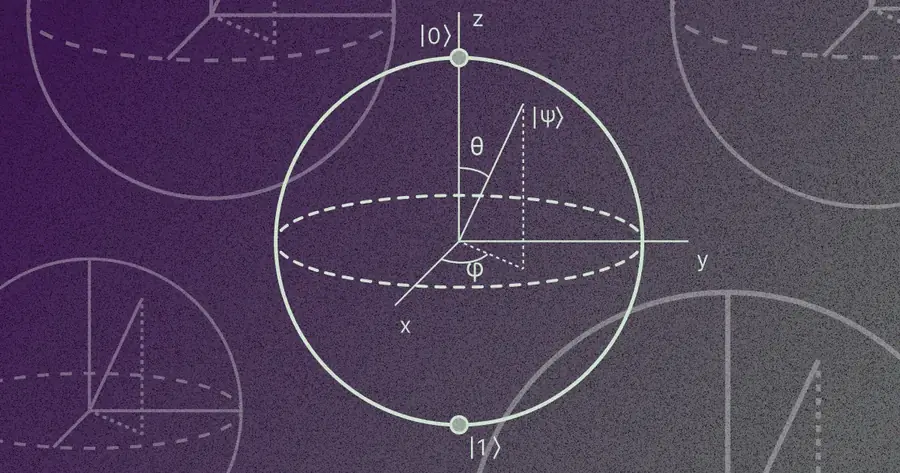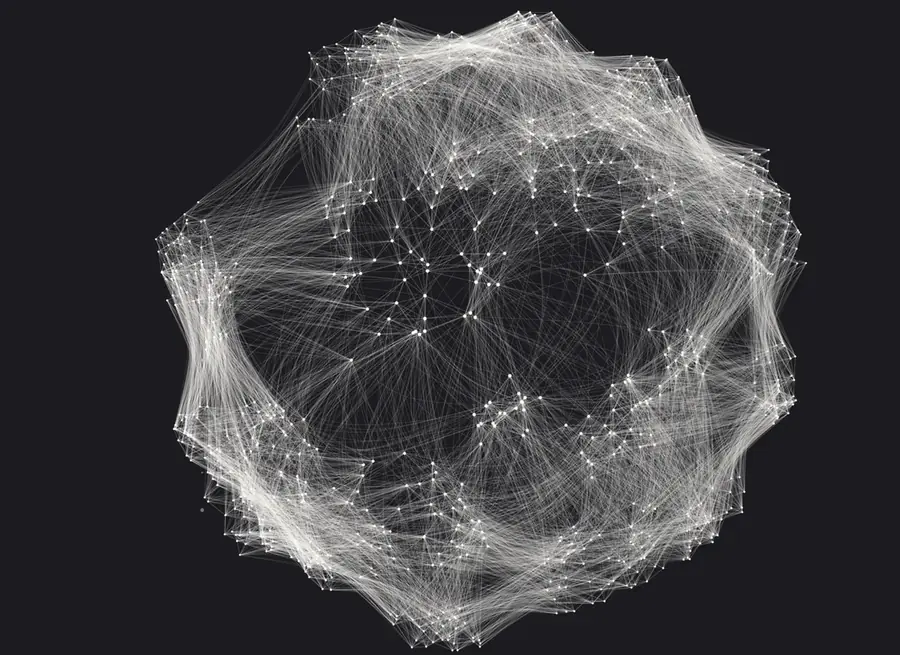When building Chatter, a real-time chat platform with voice/video calling and AI integrations, security wasn’t an afterthought—it was the foundation. I chose to implement the Signal Protocol, widely regarded as the gold standard for end-to-end encrypted messaging.
This post explores the cryptographic principles behind Signal and how we’ve implemented them in Chatter’s Go backend.
Why Signal Protocol?
The Signal Protocol powers encrypted messaging in WhatsApp, Signal, Facebook Messenger, and now Chatter. It provides:
- Perfect Forward Secrecy (PFS): Past messages remain secure even if current keys are compromised
- Post-Compromise Security (PCS): Future messages are protected even after a key compromise
- Asynchronous communication: Recipients can be offline when you send encrypted messages
- Deniable authentication: You can verify messages came from the sender, but can’t prove it to third parties
The Core Components
1. The Double Ratchet Algorithm
At the heart of Signal lies the Double Ratchet Algorithm, which combines two ratcheting mechanisms:
Symmetric-Key Ratchet (KDF Chain)
Each message derives a new encryption key from the previous one using a Key Derivation Function (KDF):
Key₁ → KDF → Key₂ → KDF → Key₃ → ...Once a key encrypts a message, it’s deleted. An attacker capturing Key₃ cannot compute Key₁ or Key₂ backward. This provides Perfect Forward Secrecy.
Handling out-of-order messages: If messages arrive out of order or some are lost, the protocol must “skip” keys and store them for later decryption. The KDF chain requires sequential derivation—to reach Key₁₀₀, you must compute Key₁, Key₂, …, Key₉₉. There’s no “indexed” derivation shortcut. This means if Bob receives 100 messages while offline, he must derive all 100 intermediate keys sequentially.
To prevent denial-of-service attacks where a malicious sender triggers excessive key derivations, implementations use a MAX_SKIP parameter (typically 1000-2000 messages) to limit how many keys can be skipped in a single chain.
Asymmetric-Key Ratchet (DH Ratchet)
The DH ratchet performs a new Diffie-Hellman key exchange when a party receives a message with a new DH public key from the peer (not based on time or message count):
Alice's DH key: a
Bob's DH key: b
Shared secret: g^(ab)Every message header contains the sender’s current ratchet public key. When Bob receives a message with a new public key from Alice, he performs a DH ratchet step, generating a fresh shared secret. This creates a “ping-pong” pattern where parties take turns introducing new key material.
Each DH exchange “ratchets” the symmetric key chain forward with new entropy. Even if an attacker compromises a key, the next DH exchange generates a completely independent key chain, providing Post-Compromise Security.
2. X3DH: Extended Triple Diffie-Hellman
The Signal Protocol uses X3DH (Extended Triple Diffie-Hellman) for initial key agreement, especially for asynchronous messaging where the recipient is offline.
The Key Types
Each user maintains three types of keys:
- Identity Key (IK): Long-term public key for the account (X25519 for DH operations; signatures are produced via XEdDSA mapping—no separate Ed25519 identity key required)
- Signed Prekey (SPK): Medium-term X25519 key signed by the identity key using XEdDSA, rotated periodically
- One-Time Prekeys (OTPKs): Single-use X25519 keys consumed during key agreement
How X3DH Works
When Alice wants to message Bob for the first time:
-
Bob publishes a prekey bundle to the server:
- Identity Key (IK_B)
- Signed Prekey (SPK_B) + signature
- One-Time Prekeys (OTPK_B₁, OTPK_B₂, …)
-
Alice fetches Bob’s bundle and performs four DH operations:
DH₁ = DH(IK_A, SPK_B) DH₂ = DH(EK_A, IK_B) DH₃ = DH(EK_A, SPK_B) DH₄ = DH(EK_A, OTPK_B) // if availableWhere
EK_Ais Alice’s ephemeral key for this session. -
Shared secret:
SK = KDF(DH₁ || DH₂ || DH₃ || DH₄)if OTPK is available, otherwiseSK = KDF(DH₁ || DH₂ || DH₃) -
Alice’s initial message includes key identifiers (SPK_id, OTPK_id if used) so Bob knows which prekeys to load from his device
This triple (or quadruple) DH exchange provides mutual authentication and forward secrecy. If no one-time prekey is available, the protocol falls back to three DH operations, with forward secrecy depending on the signed prekey’s lifetime.
Multi-Device Support
Modern messaging requires supporting multiple devices per user (phone, tablet, desktop). When Alice sends a message to Bob:
- Device Discovery: Alice fetches prekey bundles for all of Bob’s devices (using the
device_id = "*"parameter) - Separate Sessions: Alice establishes independent X3DH sessions with each device (Alice→Bob-Phone, Alice→Bob-Desktop, etc.)
- Session Management: Each device pair maintains its own Double Ratchet state, tracked by
(user_id, device_id)tuples
This ensures that Bob can decrypt messages on any device, and each device has its own forward secrecy guarantees.
3. PQXDH: Post-Quantum X3DH
To prepare for quantum computers, Signal introduced PQXDH, which adds a post-quantum Key Encapsulation Mechanism (KEM) to X3DH.
Instead of relying solely on elliptic curve DH (vulnerable to Shor’s algorithm), PQXDH combines:
- Classical X3DH (Curve25519)
- Kyber KEM (NIST-selected post-quantum algorithm)
The final shared secret: SK = KDF(X3DH_secret || Kyber_secret)
Even if a quantum computer breaks Curve25519, the Kyber component keeps messages secure.
How Chatter Implements Signal Protocol
Now let’s see how these cryptographic primitives translate into code.
Prekey Bundle Management
In Chatter, the Auth Service manages prekey bundles. When a user registers, they upload their identity key, signed prekey, and a batch of one-time prekeys.
Uploading Prekeys
// internal/services/auth/handlers/signal_prekeys.go
func (c *Context) UploadPreKeyBundle(
ctx context.Context,
req *connect.Request[pb.UploadPreKeyBundleRequest],
) (*connect.Response[emptypb.Empty], error) {
// Get user ID from auth context
userID, err := c.GetUserID(ctx)
if err != nil {
return nil, connect.NewError(connect.CodeUnauthenticated,
fmt.Errorf("failed to get user ID: %v", err))
}
// Validate prekey bundle
bundle := req.Msg.Bundle
if bundle == nil {
return nil, connect.NewError(connect.CodeInvalidArgument,
fmt.Errorf("prekey bundle is required"))
}
// Validate key lengths (Signal Protocol format: 0x05 prefix + 32 bytes)
if len(bundle.IdentityKey) != 33 {
return nil, connect.NewError(connect.CodeInvalidArgument,
fmt.Errorf("identity key must be 33 bytes"))
}
if len(bundle.SignedPrekey.Signature) != 64 {
return nil, connect.NewError(connect.CodeInvalidArgument,
fmt.Errorf("signed prekey signature must be 64 bytes"))
}
// Validate Kyber prekey if present (post-quantum cryptography)
if bundle.KyberPrekey != nil {
if len(bundle.KyberPrekey.PublicKey) != 1569 {
return nil, connect.NewError(connect.CodeInvalidArgument,
fmt.Errorf("kyber prekey public key must be 1569 bytes"))
}
}
// Store the bundle using the service layer
err = c.GetService().StorePreKeyBundle(ctx, userID, bundle)
if err != nil {
return nil, connect.NewError(connect.CodeInternal,
fmt.Errorf("failed to store prekey bundle: %v", err))
}
return connect.NewResponse(&emptypb.Empty{}), nil
}The prekeys are stored in PostgreSQL with atomic operations to ensure each one-time prekey is consumed exactly once.
Fetching Prekeys with Idempotency
When Alice wants to message Bob, she fetches his prekey bundle. The challenge: one-time prekeys must be truly one-time to prevent replay attacks.
Note: The idempotency mechanism described here is Chatter-specific (not part of the Signal Protocol specification). It solves a practical engineering challenge: ensuring prekey consumption is atomic and retry-safe in a distributed system.
Chatter uses atomic PostgreSQL updates with soft-delete tracking:
// internal/services/auth/repository/postgres/signal_protocol.go
// Atomic pop of one-time prekey (production-ready implementation)
const atomicPopQuery = `
WITH picked AS (
SELECT user_id, device_id, prekey_id, public_key
FROM signal_one_time_prekeys
WHERE user_id = $1 AND device_id = $2 AND used_at IS NULL
ORDER BY created_at ASC
FOR UPDATE SKIP LOCKED
LIMIT 1
)
UPDATE signal_one_time_prekeys p
SET used_at = NOW(), reserved_at = NOW(), reserved_by = $3, request_id = $4
FROM picked
WHERE p.user_id = picked.user_id
AND p.device_id = picked.device_id
AND p.prekey_id = picked.prekey_id
RETURNING p.prekey_id, p.public_key
`
var oneTimePrekeyId *uint32
var oneTimePrekeyPublic []byte
err = tx.QueryRow(ctx, atomicPopQuery, userID, deviceId, requestingUserID, requestID).
Scan(&oneTimePrekeyId, &oneTimePrekeyPublic)
if err != nil && !errors.Is(err, pgx.ErrNoRows) {
return nil, fmt.Errorf("failed to atomically pop one-time prekey: %w", err)
}
// If no OTPK available and we have a fallback prekey, use it
if oneTimePrekeyId == nil && fallbackPrekeyId != nil && len(fallbackPrekeyPublic) > 0 {
oneTimePrekeyId = fallbackPrekeyId
oneTimePrekeyPublic = fallbackPrekeyPublic
r.log.Warn("using fallback prekey - OTPKs depleted")
}Why this approach works:
FOR UPDATE SKIP LOCKED: Concurrent requests skip already-locked rows, preventing contention- Soft-delete with
used_at: Tracks which prekeys have been consumed without physical deletion reserved_by+request_id: Provides idempotency by tracking who requested which prekey- Fallback prekey: Ensures session establishment even when OTPKs are depleted (with reduced forward secrecy until replenished)
Fallback prekeys: If all one-time prekeys are depleted, Chatter falls back to a fallback prekey (a long-lived prekey similar to the signed prekey). This ensures sessions can still be established even when OTPKs run out, though with slightly reduced forward secrecy until the pool is replenished.
Sealed Sender: Hiding Metadata
The Signal Protocol doesn’t just encrypt message content—it also hides who sent the message from the server. This is called Sealed Sender.
Instead of the server knowing “Alice sent a message to Bob,” it only sees “someone sent an encrypted blob to Bob.”
How Sealed Sender Works
- Certificate issuance: Alice requests a Sender Certificate from the server
- Message encryption: Alice encrypts the message using the existing Double Ratchet session keys established with Bob
- Certificate attachment: Alice attaches her certificate (proving she’s authorized) to the encrypted message envelope
- Server relay: Server relays the blob to Bob without knowing who sent it
- Bob’s verification: Bob decrypts using the session keys, extracts the certificate, and validates it against the server’s certificate chain
Certificate Generation in Chatter
Chatter uses a three-tier certificate chain:
Root CA (Vault KMS)
↓ signs
Intermediate CA (deterministic key)
↓ signs
Sender Certificate (user's identity key + metadata)Note: This certificate hierarchy is Chatter-specific and inspired by Signal’s sealed sender concept. The official Signal specification describes server-issued, short-lived sender certificates but doesn’t mandate an exact certificate chain structure. We use short validity periods (24-48 hours) instead of revocation to maintain privacy and scalability.
Here’s how we generate the intermediate certificate:
// internal/services/auth/service/sealed_sender.go
func (s *serviceImpl) getOrGenerateServerCertificate(
ctx context.Context,
) (*signalv1.ServerCertificate, []byte, error) {
// Check cache first (read lock)
cachedServerCertMutex.RLock()
if cachedServerCert != nil && cachedIntermediateCurve25519Key != nil {
cert := cachedServerCert
key := cachedIntermediateCurve25519Key
cachedServerCertMutex.RUnlock()
return cert, key, nil
}
cachedServerCertMutex.RUnlock()
// Get root CA key from Vault (Curve25519 for XEdDSA)
signingKey, err := s.vaultClient.GetCurrentSigningKey(ctx)
if err != nil {
return nil, nil, fmt.Errorf("failed to get server signing key from vault: %w", err)
}
rootCurve25519PrivateKey := signingKey.PrivateKey
// Derive INTERMEDIATE Curve25519 keypair deterministically from root CA key
// This ensures the ServerCertificate is always the same for the same root CA
hasher := sha256.New()
hasher.Write([]byte("Signal-Server-Intermediate-Key-v1"))
hasher.Write(rootCurve25519PrivateKey)
intermediateCurve25519PrivateKey := hasher.Sum(nil) // 32-byte seed
// Convert the intermediate key to Ed25519 using XEdDSA (handles s=0 enforcement)
intermediateEdPrivateKey, err := crypto.Curve25519ToEd25519PrivateKey(intermediateCurve25519PrivateKey)
if err != nil {
return nil, nil, fmt.Errorf("failed to convert intermediate key to Ed25519: %w", err)
}
// Get the Ed25519 public key
intermediateEdPublicKey := intermediateEdPrivateKey.Public().(ed25519.PublicKey)
// Convert the Ed25519 public key to Curve25519 using the birational map
intermediateCurve25519PublicKey, err := crypto.EdwardsToMontgomeryPublic(intermediateEdPublicKey)
if err != nil {
return nil, nil, fmt.Errorf("failed to compute intermediate public key: %w", err)
}
// Add Signal Protocol DJB type byte (0x05) to the 32-byte Curve25519 public key
intermediatePublicKeyWithType := append([]byte{0x05}, intermediateCurve25519PublicKey...)
// Create ServerCertificate inner (contains intermediate Curve25519 public key)
keyID := signingKey.KeyID
serverCertInner := &signalv1.ServerCertificate_Certificate{
Id: &keyID,
Key: intermediatePublicKeyWithType, // 33 bytes: 0x05 + 32-byte Curve25519 public key
}
serverCertInnerBytes, err := proto.Marshal(serverCertInner)
if err != nil {
return nil, nil, fmt.Errorf("failed to marshal server certificate inner: %w", err)
}
// Sign with ROOT CA Curve25519 private key using XEdDSA
serverCertSignature, err := crypto.SignXEdDSA(rootCurve25519PrivateKey, serverCertInnerBytes)
if err != nil {
return nil, nil, fmt.Errorf("failed to sign server certificate with XEdDSA: %w", err)
}
// Verify signature (self-check)
rootEdPrivateKey, err := crypto.Curve25519ToEd25519PrivateKey(rootCurve25519PrivateKey)
if err != nil {
return nil, nil, fmt.Errorf("failed to convert root key for verification: %w", err)
}
rootEdPublicKey := rootEdPrivateKey.Public().(ed25519.PublicKey)
if !ed25519.Verify(rootEdPublicKey, serverCertInnerBytes, serverCertSignature) {
return nil, nil, fmt.Errorf("server certificate XEdDSA signature self-verification failed")
}
// Create ServerCertificate
serverCert := &signalv1.ServerCertificate{
Certificate: serverCertInnerBytes,
Signature: serverCertSignature,
}
// Cache it globally
cachedServerCert = serverCert
cachedIntermediateCurve25519Key = intermediateCurve25519PrivateKey
return serverCert, intermediateCurve25519PrivateKey, nil
}XEdDSA: Bridging Curve25519 and Ed25519
Signal Protocol uses Curve25519 for DH key exchange but needs Ed25519 for signatures on prekeys and certificates (not on normal message payloads). XEdDSA is a signature scheme that lets you sign with a Curve25519 key by converting it to Ed25519 coordinates.
This is critical for Sealed Sender because:
- User identity keys are Curve25519 (for X3DH key exchange)
- Prekeys and certificates need Ed25519 signatures (for verification)
- Normal messages use symmetric authentication within the Double Ratchet (no public-key signatures)
The conversion happens in Chatter’s crypto layer, interfacing with Vault KMS for the root signing key.
Issuing Sender Certificates
When a user requests a certificate:
func (s *serviceImpl) RequestSenderCertificate(
ctx context.Context,
userID string,
deviceID uint32,
validityPeriodProto *durationpb.Duration,
) (*chatauth.RequestSenderCertificateResponse, error) {
// Convert protobuf Duration to time.Duration
var validityPeriod time.Duration
if validityPeriodProto != nil {
validityPeriod = validityPeriodProto.AsDuration()
}
// Validate validity period
if validityPeriod > MaxCertificateValidityDays*24*time.Hour {
validityPeriod = MaxCertificateValidityDays * 24 * time.Hour
}
if validityPeriod <= 0 {
validityPeriod = DefaultCertificateValidityDays * 24 * time.Hour
}
// Get or generate the pre-cached ServerCertificate (Signal-style)
serverCert, intermediateCurve25519PrivateKey, err := s.getOrGenerateServerCertificate(ctx)
if err != nil {
return nil, fmt.Errorf("failed to get server certificate: %w", err)
}
// Get user's identity public key (from Signal Protocol bundle)
identityKey, err := s.repo.GetUserIdentityPublicKey(ctx, userID)
if err != nil {
return nil, fmt.Errorf("failed to get user identity key: %w", err)
}
// Validate identity key format for Signal Protocol
if len(identityKey) != 33 {
return nil, fmt.Errorf("invalid identity key length: expected 33 bytes, got %d bytes", len(identityKey))
}
// Signal Protocol identity keys should start with 0x05 (DJB type prefix)
if identityKey[0] != 0x05 {
return nil, fmt.Errorf("invalid identity key prefix: got 0x%02x, expected 0x05", identityKey[0])
}
// Calculate expiration
now := time.Now().UTC()
expiresAt := now.Add(validityPeriod)
expiresMillis := uint64(expiresAt.UnixMilli())
// Create inner SenderCertificate.Certificate exactly like Signal-Server does
senderCertInner := &signalv1.SenderCertificate_Certificate{
SenderDevice: &deviceID,
Expires: &expiresMillis,
IdentityKey: identityKey, // User's Signal Protocol identity key (33 bytes with type byte)
Signer: serverCert, // Nested ServerCertificate object
SenderUuid: &userID,
}
// Serialize inner certificate
senderCertInnerBytes, err := proto.Marshal(senderCertInner)
if err != nil {
return nil, fmt.Errorf("failed to marshal sender certificate inner: %w", err)
}
// Sign inner certificate with INTERMEDIATE Curve25519 server private key using XEdDSA
senderCertSignature, err := crypto.SignXEdDSA(intermediateCurve25519PrivateKey, senderCertInnerBytes)
if err != nil {
return nil, fmt.Errorf("failed to sign sender certificate with XEdDSA: %w", err)
}
// Create outer SenderCertificate (this is what libsignal deserializes)
senderCert := &signalv1.SenderCertificate{
Certificate: senderCertInnerBytes,
Signature: senderCertSignature,
}
// Serialize final certificate to protobuf bytes
senderCertBytes, err := proto.Marshal(senderCert)
if err != nil {
return nil, fmt.Errorf("failed to marshal sender certificate: %w", err)
}
// Extract key ID from ServerCertificate for response
serverCertInner := &signalv1.ServerCertificate_Certificate{}
proto.Unmarshal(serverCert.Certificate, serverCertInner)
// Calculate refresh time (refresh before expiration)
refreshAfter := expiresAt.Add(-RefreshCertificateBeforeDays * 24 * time.Hour)
if refreshAfter.Before(now) {
refreshAfter = now.Add(1 * time.Hour)
}
// Return response with protobuf certificate (compatible with libsignal)
return &chatauth.RequestSenderCertificateResponse{
Certificate: &chatcommon.SenderCertificate{
Certificate: senderCertBytes, // Signal Protocol protobuf format
ExpiresAt: uint64(expiresAt.Unix()),
UserId: userID,
DeviceId: deviceID,
ServerKeyId: *serverCertInner.Id,
},
RefreshAfter: timestamppb.New(refreshAfter),
}, nil
}Privacy by design: Sender certificates are never stored server-side. They’re issued on-demand and the client holds them. The server can’t retroactively de-anonymize messages.
Message Service Integration
The Message Service performs lightweight validation on sealed sender messages:
// internal/services/message/service/sealed_sender_validator.go
func (s *serviceImpl) ValidateSealedSenderCertificate(
ctx context.Context,
certificateBytes []byte,
serverKeyID uint32,
) error {
// Parse the Signal Protocol SenderCertificate protobuf
senderCert := &signalv1.SenderCertificate{}
if err := proto.Unmarshal(certificateBytes, senderCert); err != nil {
return fmt.Errorf("failed to parse Signal Protocol certificate: %w", err)
}
// Parse inner certificate
innerCert := &signalv1.SenderCertificate_Certificate{}
if err := proto.Unmarshal(senderCert.Certificate, innerCert); err != nil {
return fmt.Errorf("failed to parse inner certificate: %w", err)
}
// Get server trust root from Vault to verify signature
signingKey, err := s.GetVaultClient().GetCurrentSigningKey(ctx)
if err != nil {
return fmt.Errorf("failed to get server trust root from vault: %w", err)
}
// Verify the server_key_id matches
if serverCertInner.Id == nil || *serverCertInner.Id != signingKey.KeyID {
return fmt.Errorf("certificate server_key_id mismatch")
}
// Verify certificate hasn't expired (milliseconds timestamp)
expiresAt := time.UnixMilli(int64(*innerCert.Expires))
if time.Now().UTC().After(expiresAt) {
return fmt.Errorf("certificate expired at %s", expiresAt)
}
// Verify Ed25519 signature on inner certificate
if !ed25519.Verify(signingKey.PublicKey, senderCert.Certificate, senderCert.Signature) {
return fmt.Errorf("invalid certificate signature")
}
return nil
}Important: The server performs minimal validation on sealed messages:
- Message structure and size (minimum 48 bytes for Signal Protocol envelope)
- Timestamp freshness (not too old, not in the future)
server_key_idmatches current Vault signing key
The server cannot and does not:
- Extract sender identity from the sealed envelope (that would break privacy)
- Validate the certificate inside the envelope (only recipients can decrypt it)
- Track sender-receiver mappings
The server only knows:
- The message is for Bob (routing information)
- The certificate is structurally valid and not expired
- It does not know it’s from Alice (metadata privacy preserved)
Post-Quantum Readiness
Chatter’s Signal Protocol implementation supports Kyber prekeys (NIST’s post-quantum KEM standard).
When uploading prekeys, clients can optionally include a Kyber public key:
type PreKeyBundle struct {
IdentityKey []byte // Curve25519
SignedPreKey *SignedPreKey // Curve25519 + Ed25519 signature
OneTimePreKeys []*OneTimePreKey // Curve25519
KyberPreKey *KyberPreKey // Post-quantum KEM
}During X3DH, if a Kyber prekey is available:
Classical_Secret = X3DH(IK, SPK, OTPK)
PQ_Secret = Kyber_Decapsulate(ciphertext, private_key)
Final_Secret = KDF(Classical_Secret || PQ_Secret)This hybrid approach provides:
- Security today with Curve25519
- Security tomorrow against quantum computers with Kyber
Key Rotation and Hygiene
Chatter implements best practices for key lifecycle management:
Signed Prekey Rotation
Signed prekeys should be rotated periodically (every 7-30 days) to limit exposure. The rotation process involves:
- Generating a new signed prekey on the client side
- Uploading the new prekey via
UploadPreKeyBundle(which usesON CONFLICT ... DO UPDATEto replace the old one) - Client-side rotation schedule - clients track the prekey age and trigger rotation automatically
In Chatter’s current implementation, clients are responsible for:
- Tracking when their signed prekey was created (via the
timestampfield) - Generating a new signed prekey when it’s approaching the rotation threshold
- Uploading the new bundle (the server’s
ON CONFLICTclause ensures atomic replacement)
This client-driven approach ensures that:
- The server never holds multiple signed prekeys per device (simplifying key management)
- Clients maintain control over their key lifecycle
- Old sessions continue working during rotation (they use the established Double Ratchet state)
One-Time Prekey Replenishment
Clients monitor their OTPK pool and replenish when running low:
// internal/services/auth/handlers/signal_prekeys.go
func (c *Context) RefreshPreKeys(
ctx context.Context,
req *connect.Request[pb.RefreshPreKeysRequest],
) (*connect.Response[emptypb.Empty], error) {
// Get user ID from auth context
userID, err := c.GetUserID(ctx)
if err != nil {
return nil, connect.NewError(connect.CodeUnauthenticated,
fmt.Errorf("failed to get user ID: %v", err))
}
// Validate new prekeys
if len(req.Msg.NewOneTimePrekeys) == 0 {
return nil, connect.NewError(connect.CodeInvalidArgument,
fmt.Errorf("at least one new prekey is required"))
}
// Validate each prekey (Signal Protocol: 0x05 prefix + 32 bytes)
for i, prekey := range req.Msg.NewOneTimePrekeys {
if len(prekey.PublicKey) != 33 {
return nil, connect.NewError(connect.CodeInvalidArgument,
fmt.Errorf("prekey %d: public key must be 33 bytes", i))
}
}
// Add new prekeys using service layer
err = c.GetService().AddOneTimePreKeys(ctx, userID, req.Msg.NewOneTimePrekeys)
if err != nil {
return nil, connect.NewError(connect.CodeInternal,
fmt.Errorf("failed to add new prekeys: %v", err))
}
return connect.NewResponse(&emptypb.Empty{}), nil
}Clients can check their prekey stats:
// internal/services/auth/handlers/signal_prekeys.go
func (c *Context) GetPreKeyStats(
ctx context.Context,
req *connect.Request[pb.GetPreKeyStatsRequest],
) (*connect.Response[pb.GetPreKeyStatsResponse], error) {
userID, err := c.GetUserID(ctx)
if err != nil {
return nil, connect.NewError(connect.CodeUnauthenticated,
fmt.Errorf("failed to get user ID: %v", err))
}
// Default device ID to 1 if not provided
deviceID := req.Msg.DeviceId
if deviceID == 0 {
deviceID = 1
}
// Get prekey statistics from service layer
availableCount, shouldRefill, err := c.GetService().GetSignalPreKeyStats(ctx, userID, deviceID)
if err != nil {
return nil, connect.NewError(connect.CodeInternal,
fmt.Errorf("failed to get prekey stats: %v", err))
}
return connect.NewResponse(&pb.GetPreKeyStatsResponse{
AvailableCount: availableCount,
ShouldRefill: shouldRefill, // true when less than 20 prekeys remaining
DeviceId: deviceID,
}), nil
}Security Properties Achieved
By implementing the Signal Protocol, Chatter provides:
| Property | Mechanism |
|---|---|
| Perfect Forward Secrecy | Symmetric key ratchet (KDF chain) |
| Post-Compromise Security | Asymmetric key ratchet (DH ratchet) |
| Asynchronous messaging | X3DH prekey bundles |
| Metadata privacy | Sealed Sender certificates |
| Quantum resistance | Hybrid Kyber + Curve25519 |
| Deniable authentication | Symmetric message authentication (no signatures on messages; prekeys are signed, transcripts are deniable) |
Design Decisions and Trade-offs
Why Not TLS?
TLS provides transport security (server ↔ client), but the server can still read messages. Signal Protocol provides end-to-end encryption—even Chatter’s servers can’t decrypt messages.
Vault KMS for Root CA
We use HashiCorp Vault for the root signing key instead of storing it in the database:
- Security: Key never leaves Vault’s HSM
- Auditability: All signing operations are logged
- Rotation: Can rotate root CA without code changes
Stateless Certificates
Sender certificates are not stored server-side. This means:
- Privacy: Can’t retroactively de-anonymize senders
- Scalability: No database writes for certificate issuance
- Trade-off: Can’t revoke individual certificates (rely on expiration)
For revocation, we use short validity periods (24-48 hours) and rely on clients refreshing certificates regularly.
Conclusion: Cryptographic Elegance Meets Practical Engineering
The Signal Protocol is a masterclass in applied cryptography: it combines DH key exchange, symmetric ratcheting, KDF chains, and signature schemes into a coherent system that’s both secure and usable.
Implementing it in Chatter required:
- Deep understanding of X3DH and Double Ratchet
- Careful key lifecycle management (generation, storage, rotation, deletion)
- Atomic database operations for one-time prekey consumption
- Certificate chain validation with XEdDSA
- Post-quantum readiness with Kyber
The result: end-to-end encrypted messaging with metadata privacy, forward secrecy, and quantum resistance—all while supporting asynchronous communication and multi-device accounts.
Key Takeaways:
- Signal Protocol = X3DH + Double Ratchet + Sealed Sender
- Perfect Forward Secrecy from symmetric key ratcheting
- Post-Compromise Security from DH ratcheting
- Metadata privacy from Sealed Sender certificates
- Quantum resistance from hybrid Kyber + Curve25519
- Idempotency is critical for one-time prekey consumption
- Vault KMS for root certificate signing keys
- Stateless certificates for privacy and scalability
Cryptography isn’t just math—it’s about building systems that protect users even when everything else fails.



